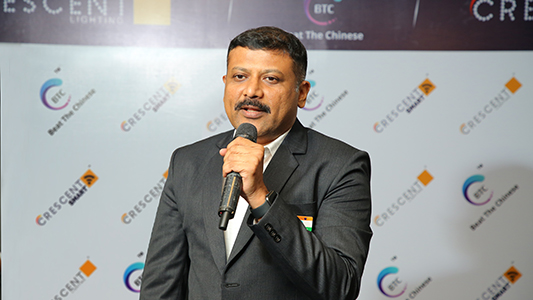Smart cities are rapidly becoming the future of urban development, embracing innovative technologies to enhance the quality of life for citizens. One crucial element that plays a significant role in the transformation of cities into smart and sustainable spaces is LED lighting. LED lighting has revolutionized the way cities illuminate their streets, buildings, and public spaces, offering numerous benefits and playing a vital role in the overall smart city ecosystem. LED lighting technology offers exceptional energy efficiency, durability, and versatility compared to traditional lighting systems. The adoption of LED lighting in smart cities has resulted in significant energy savings, reduced carbon emissions, and lowered maintenance costs. LED lights consume less energy and have a longer lifespan, leading to reduced electricity bills and a smaller environmental footprint. This makes LED lighting a sustainable choice for cities striving to achieve energy efficiency and environmental sustainability goals.
LED lighting also enables cities to create visually appealing environments. With programmable LED lights, cities can introduce dynamic lighting schemes that can be customized for special events, celebrations, or artistic displays. This capability allows cities to enhance their architectural landmarks, public spaces, and cultural attractions, creating immersive and engaging experiences for residents and visitors alike. LED lighting can transform the nighttime cityscape, creating a vibrant and visually stunning atmosphere.
Let us explore the numerous benefits of LED lighting and how it has revolutionized the way cities illuminate their streets, buildings, and public spaces, and playing a vital role in the development of smart cities:
1. Energy Efficiency and Cost Savings:
LED lighting is highly energy-efficient compared to traditional lighting systems. LEDs consume significantly less energy, resulting in reduced electricity bills for cities. Moreover, LED lights have a longer lifespan, reducing maintenance costs and the need for frequent replacements. The energy-saving attributes of LED lighting contribute to the overall sustainability goals of smart cities, promoting environmental responsibility and reducing carbon emissions.
2. Enhanced Lighting Management:
Smart cities leverage LED lighting technology to integrate lighting systems with advanced sensors, controls, and connectivity. This enables intelligent lighting management, allowing cities to adjust lighting levels based on real-time data. By dynamically adapting to factors such as occupancy, traffic patterns, and ambient light conditions, cities can optimize energy usage and provide adequate lighting in different areas at different times. This level of control enhances energy efficiency and contributes to overall cost savings.
3. Safety and Security:
LED lighting enhances public safety in smart cities. LED lights provide better visibility, improving safety for pedestrians, cyclists, and drivers. Smart city lighting systems can be programmed to adjust light levels according to specific needs, ensuring well-lit environments and reducing the risk of accidents and crime. Additionally, LED lights can be integrated with surveillance cameras and smart sensors, enabling intelligent surveillance and real-time monitoring of public spaces.
4. Aesthetics and Ambiance:
LED lighting offers cities the opportunity to create visually appealing environments. Programmable LED lights can be used to introduce dynamic lighting schemes, allowing cities to showcase architectural landmarks, enhance public spaces, and create immersive experiences. The ability to customize lighting for special events, celebrations, or artistic displays adds a touch of creativity and vibrancy to the cityscape, enhancing the overall ambiance of the city.
5. Connectivity and Data-driven Applications:
LED lighting serves as a foundation for connectivity and data-driven applications in smart cities. LED streetlights can be equipped with sensors and wireless communication capabilities, forming a vast network of connected devices. This network infrastructure enables cities to collect valuable data on traffic flow, air quality, noise levels, and other environmental factors. By harnessing this data, city authorities can make informed decisions to optimize city operations, improve infrastructure planning, and enhance the overall livability of the city.
Conclusion:
LED lighting plays a critical role in the development of smart cities. Its energy efficiency, enhanced lighting management capabilities, contribution to public safety, aesthetic appeal, and connectivity features make it an indispensable component of smart city initiatives. LED lighting not only provides cost savings and environmental benefits but also enhances the overall livability and attractiveness of cities. As smart cities continue to evolve, LED lighting will remain a key technology that drives the transformation, ensuring cities are sustainable, efficient, and connected for the betterment of citizens’ lives.














